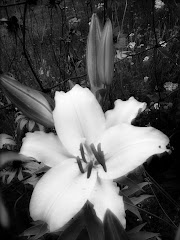It is now 6 to 8 weeks out until planting time! In Zone 5, the frost free date is typically around Mother's Day. I usually wait a couple days after that date to plant just to be safe.
Today, I gathered four trays and plastic cells from the potting shed. I cleaned the trays/cells and filled them with seed starter soil. In these trays/cells, I planted yellow and green peppers, beefsteak, cherry and pear tomatoes, cabbage, basil and eggplant. In one premade tray of peat pots, I planted yellow marigolds. In another premade tray I did a combination of alyssum, orange coneflowers and purple cosmos. The marigold and coneflower seeds were collected last year from my garden.
I covered each of the trays with a clear plastic dome to keep the soil moist. Light and warmth is provided free of charge courtesy of the sun that comes through the south facing French doors in the kitchen. Seeds should start germinating in 7 to 10 days.
The cats were very curious about today's activity. I had a few noses and paws in the soil and cats on the table watching me work. It was an interesting and fun day for them too. They like to "garden" as much as I do ;)
28.3.09
16.3.09
 Orange cosmos, catnip and agastache (lavender hyssop) line the fence near the main vegetable garden.
Orange cosmos, catnip and agastache (lavender hyssop) line the fence near the main vegetable garden.Agastache is an easy to grow perennial herb. Agastache has all of the qualities I look for in a perennial: low maintenance, drought tolerant and loved by butterflies, hummingbirds and pollinaters like the bumble bee. It's especially pretty to see the orange sulfur butterfly feeding on the purple flowers.
A prolific bloomer: agastache's tubular, spikey flower heads bloom from July to September. Height is between 1' to 3'.
Zone 5 Rating: Superb!
12.3.09
The Potting Shed's Garden History

The first year I dug out a garden for the potting shed, I filled it mostly with annuals: marigolds - yellow and orange - and zinnias - red and multi-colored. In the fall, I collected the marigold seeds and later used them in the vegetable garden. Marigolds are great companion plants for tomatoes and peppers. Their pungent smell keeps insects away.
Over the years, the potting shed garden has been a raspberry patch and a plot for sunflowers. Currently, it is a vegetable (corn, tomatoes) and dill garden.
------------
A large compost bin is located to the right of the garden. Every spring, I enrich the soil with compost. Last year, I did a top dressing of chicken manure also because I had grown popcorn the previous year and was putting in a crop of sweet corn. In the main garden, I would rotate between beans and corn. But I like this location for the corn. It is protected on the north side and the west by a large apple tree. Out in the main garden, I can usually count on the corn being knocked down during one of our many Ohio thunderstorms. I might be committing a garden sin, but the potting shed garden will be seeing corn again this year.
My Petite Columbine
As a gardener, I tend to favor easy to grow and utilitarian plants. Hybrid roses are too fussy for me. Impatiens try my patience constantly demanding water. My laziness no doubt keeps me from growing as a gardener, but until I retire, my time is limited, so I eschew the needy.
Columbine is both easy and utilitarian. It is also hardy. It's also everywhere.
Columbine's large flower clusters bloom in the late spring, early summer and attract hummingbirds and bees. The bees volley between the rock and vegetable gardens where they pollinate the cucumbers.
A native plant, Columbine is insect and disease resistant. It can be directly seeded (I collect the seeds when the seed pods are dry) or the plant can be divided. I grow the purple, blue and pink varieties. Columbine also comes in red, white and yellow.
Columbine is both easy and utilitarian. It is also hardy. It's also everywhere.
Columbine's large flower clusters bloom in the late spring, early summer and attract hummingbirds and bees. The bees volley between the rock and vegetable gardens where they pollinate the cucumbers.
A native plant, Columbine is insect and disease resistant. It can be directly seeded (I collect the seeds when the seed pods are dry) or the plant can be divided. I grow the purple, blue and pink varieties. Columbine also comes in red, white and yellow.
Subscribe to:
Posts (Atom)




